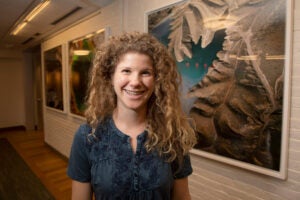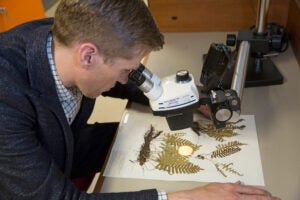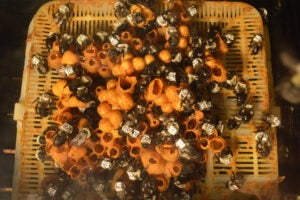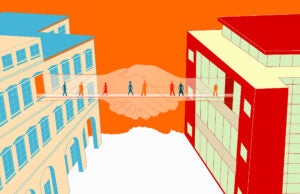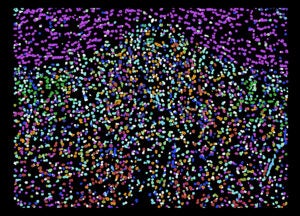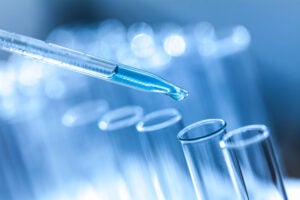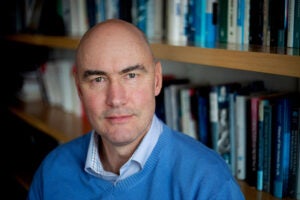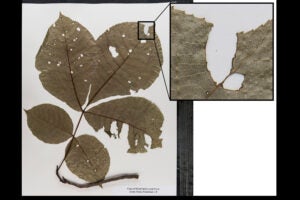Tag: Reuell
-
Nation & World
And now, land may be sinking
A new study, which used everything from tide gauges to GPS data to paint the most accurate picture ever of sea-level rise along the East Coast of the U.S., is suggesting that in addition to rising seas, communities along the coast may also have to contend with the land sinking.
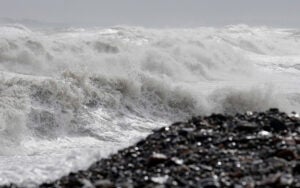
-
Nation & World
Solving colibactin’s code
In an effort to understand how colibactin, a compound produced by certain strains of E. coli, may be connected to the development of colorectal cancer, Harvard researchers are exploring how the compound damages DNA to produce DNA adducts.
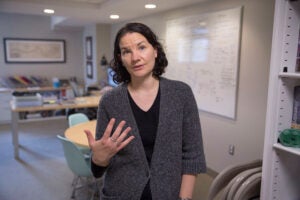
-
Nation & World
Rapid evolution, illustrated
A study in which mice were released into outdoor enclosures to track how light- and dark-colored specimens survived confirms that mice survive better in similarly colored habitats, providing insights into evolution.
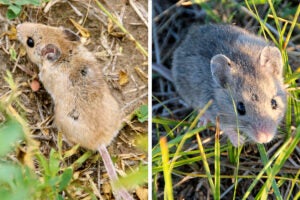
-
Nation & World
Microbial manufacturing
Emily Balskus and a team of researchers untangled how soil bacteria are able to manufacture streptozotocin, an antibiotic and anti-cancer compound.
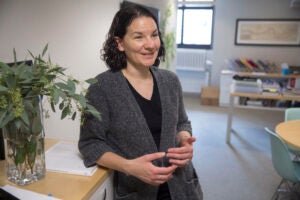
-
Nation & World
Spending dips on health care for the Medicare elderly
Health care spending among the Medicare population age 65 and older has slowed dramatically since 2005, and as much as half of that reduction can be attributed to reduced spending on cardiovascular disease, a new Harvard study has found.
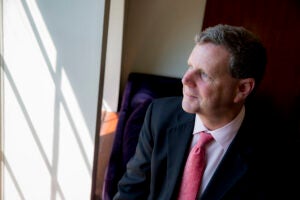
-
Nation & World
Looking at lunglessness
A recent study shows that a gene that produces surfactant protein c — a key protein for lung function — is expressed in the skin and mouths of lungless salamanders, suggesting it also plays an important role for cutaneous respiration.
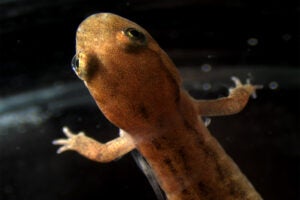
-
Nation & World
The mystery of the medicine man
A paper published earlier this year argues that shamanism develops as specialists compete to provide magical services to people in their communities, and the outcome is a set of traditions that hacks people’s psychological biases to convince them that they can control the uncertain.
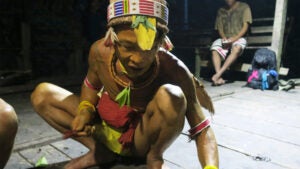
-
Nation & World
Replacing hard parts in soft robots
Harvard scientists have created a soft valve that could replace “hard” valves and lead to the creation of entirely soft robots. The valve’s structure can also be used to produce unique, oscillatory behavior.
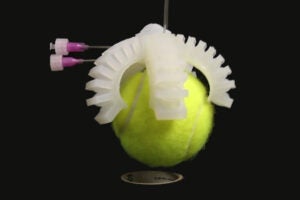
-
Nation & World
New Marshall scholars gaze ahead
Four Harvard seniors, among the students selected this week as Marshall scholars, ponder their future. Their scholarships pay for two years of advanced study at a college or university of their choice in the United Kingdom.
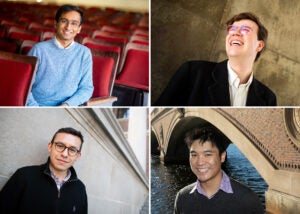
-
Nation & World
Reading teeth
By examining the teeth of Neanderthal infants, a team of researchers was able to glean insight into nursing and weaning behavior as well as winter and summer cycles. The study even found evidence that the Neanderthals had been exposed to lead — the earliest such exposure ever recorded in any human ancestor.
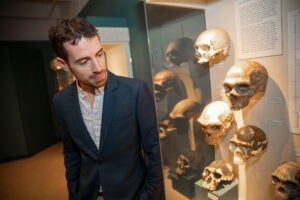
-
Nation & World
How mammals grew diverse
Using a detailed, musculoskeletal model of an echidna forelimb, Harvard scientists are not only shedding light on how the little-studied echidna’s forelimbs work, but also opening a window into understanding how extinct mammals might have used those limbs.
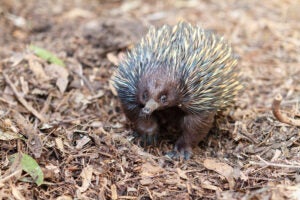
-
Nation & World
Something weird this way comes
A paper by Harvard researchers wonders whether the interstellar object known as “‘Oumuamua” is a visitor from an alien civilization.
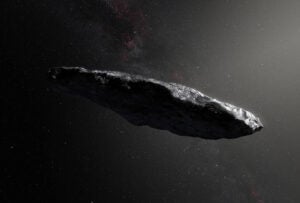
-
Nation & World
Fish teeth mark periods of evolution
Based on close examination of thousands of fossilized fish teeth, a Harvard researcher found that, while the asteroid impact that killed off the dinosaurs did lead to the extinction of some fish species, it also set the stage for two periods of rapid evolution among marine life.
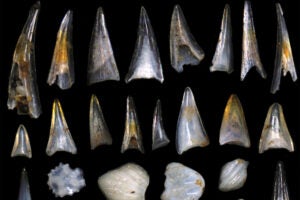
-
Nation & World
Turning tide on greenhouse gases
Emissions from power plants and heavy industry, rather than spewing into the atmosphere, could be captured and chemically transformed from greenhouse gases like carbon dioxide into industrial fuels or chemicals thanks to a system developed by Harvard researchers.
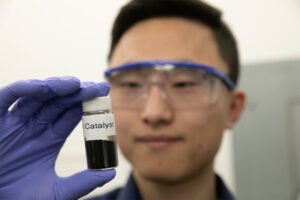
-
Nation & World
Electrons, up really close
Working in a basement lab at Harvard, a group of researchers led by John Doyle, the Henry B. Silsbee Professor of Physics, have been part of a team making the most precise measurement of the shape of the field around an electron. The results suggest that some theories for what lies beyond the standard model…
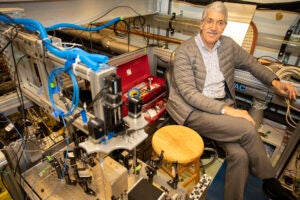
-
Nation & World
A measure of success for groundwater storage
A recent study used seismic noise to measure the size and water levels in underground aquifers, focusing on California’s San Gabriel Valley aquifer, which had to meet the demands of 1 million people during a five-year drought.
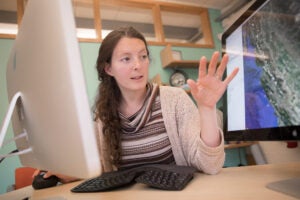
-
Nation & World
Racial and economic disparities intertwined, study finds
While African-Americans have moved to higher ranks on the income distribution scale in the decades since the Civil Rights Movement, those improvements have largely been blunted by rapid income growth for the richest members of society and income stagnation among lower- and middle-income families.
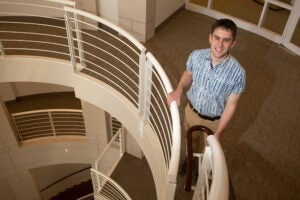
-
Nation & World
Breaking down backbones
Harvard scientists are using the fossil record and a close examination of the vertebrae of thousands of modern animals to understand how and when specialized regions in the spines of mammals developed.
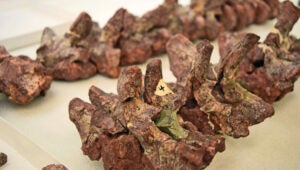
-
Nation & World
Dancing with the future
A multimedia production incorporates dance, music, and spoken word to explore how humans might cooperate with future generations to try to solve problems like climate change. “Dancing with the Future” will premiere at Farkas Hall on Sept. 25.
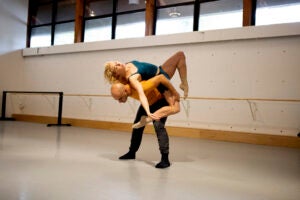
-
Nation & World
For teens who feel it all, a research-backed explanation
When teenagers seem to be experiencing conflicting emotions at the same time and struggling to make sense of them all, it may be because they are.
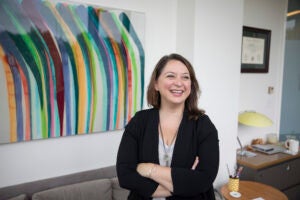
-
Nation & World
Examining aftershocks with AI
Sparked by a suggestion from researchers at Google, Harvard scientists are using artificial intelligence technology to analyze a database of earthquakes from around the world in an effort to predict where aftershocks might occur. Using deep-learning algorithms, they developed a system that, while still imprecise, was able to forecast aftershocks significantly better than random assignment.

-
Nation & World
Movement monitor
A team of researchers from the Rowland Institute at Harvard, Harvard University, and the University of Tübingen is turning to artificial intelligence technology to make it far easier than ever before to track animals’ movements in the lab.
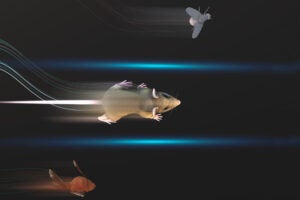
-
Nation & World
Tracking rivers to read ancient glaciers
In a new study, Harvard researchers say they may be able to estimate how glaciers moved by examining how the weight of the ice sheet altered topography and led to changes in the course of rivers. The study is described in a paper published in Geology.
